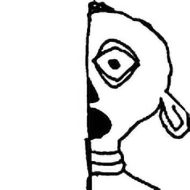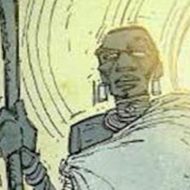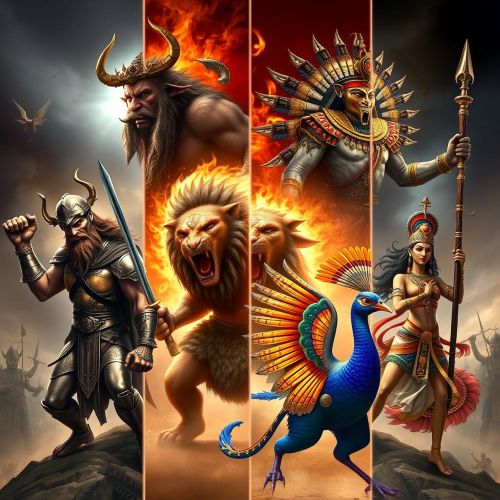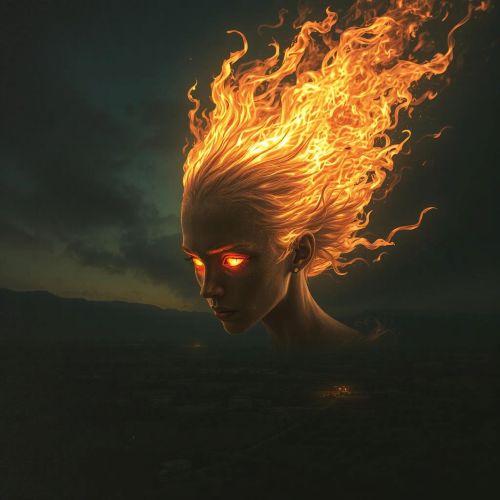Adroa : The Supreme God
Listen
At a glance
| Description | |
|---|---|
| Origin | East African Mythology |
| Classification | Gods |
| Family Members | N/A |
| Region | South Sudan, Congo, Uganda |
| Associated With | Creation |
Adroa
Introduction
Adroa holds a central role in the mythological narratives of the Lugbara people in Central Africa. He is venerated as the supreme deity or spirit, recognized by the title Adroa ‘ba o’bapiri, meaning ‘God, the creator of men.’ As a pivotal figure, Adroa is attributed with the fashioning of the inaugural man, Gborogboro, and woman, Meme. Within Lugbara beliefs, these twins are acknowledged as the progenitors, tracing their lineage as the esteemed ancestors of the Lugbara community.
Physical Traits
Adroa is illustrated as a towering, white entity with only half a body. His distinctive physical features include a singular eye, ear, arm, and leg, and his mode of movement involves hopping on one leg. This distinct anatomy distinguishes him within the tapestry of Lugbara mythology. Frequently portrayed as a dual-natured deity, Adroa encapsulates both divine and earthly attributes. Many myths describe him as having two faces – one directed forward, symbolizing his divine essence, and another facing backward, indicative of his link to the mortal realm.
Family
While specific details concerning Adroa’s family remain elusive, he is an integral part of the pantheon of deities within Lugbara mythology. This divine assembly encompasses various spirits known as Adroanzi, acknowledged as the progeny of Adroa. The intricacies of Adroa’s familial bonds in African mythology exhibit a rich diversity across different regions. In certain traditions, he is regarded as the offspring of the supreme deity, while in others, he is depicted as a self-created entity emerging from the primordial chaos. The enigmatic ambiguity surrounding his origin adds depth to Adroa’s character, showcasing the varied interpretations of his role within the expansive pantheon of African deities.
Moreover, Adroa is occasionally linked to other divine beings, establishing intricate familial connections. These associations often serve as narrative devices, providing explanations for the origins of natural phenomena or cultural practices within specific communities. The complexity of Adroa’s familial ties underscores the multifaceted nature of African mythology and its capacity to adapt to diverse cultural narratives.
Other names
While Adroa is predominantly recognized by this name in Lugbara mythology, he also assumes alternate identities such as Adronga or Adrogoa, particularly in his representation as a sky deity. In the context of a death deity, he is referred to as Adroa ‘ba o’dupiri, translated as ‘God, the taker away of men.’ These varying names exemplify the cultural diversity and linguistic abundance found across the African continent. In certain traditions, Adroa may be addressed by titles emphasizing specific facets of his character or delineating his functions within the intricate framework of mythology.
Powers and Abilities
Endowed with immense power and authority as the supreme god, Adroa played a pivotal role in shaping the social order by imparting his laws to the tribal ancestors of the Lugbara. Adroa manifests in two primary aspects: Adroa the good (referred to as onyiru in Lugbara) and Adro the bad (known as onzi in Lugbara). The good aspect, Adroa, is transcendental and distant from humanity, while the bad aspect, Adro, resides on earth, particularly in rivers. Although typically unseen, Adro becomes visible to those approaching death.
Adroa’s dual nature is underscored by a spectrum of powers and abilities. As a deity wielding influence over both the divine and mortal realms, he is closely associated with concepts such as balance, harmony, and transition. Adroa’s unique capabilities extend to mediating between the spiritual and earthly spheres, guiding individuals through the various transitions of life, whether it be the initiation of birth, the union of marriage, or the inevitable passage of death.
Modern Day Influence
The impact of Adroa and other Lugbara deities resonates deeply within the cultural narratives and traditions of the Lugbara people. These myths and legends constitute a vital component of Lugbara heritage, molding their perceptions of natural phenomena and societal structures. Among these narratives, the tale of Adroa fashioning the first man and woman stands out as a widely embraced story, emphasizing the significance of family and ancestry. It serves as a poignant reminder of the Lugbara’s mythological legacy, perpetuating its influence on the cultural fabric of the Lugbara community.
In the realms of art and literature, Adroa’s dual nature serves as a wellspring of inspiration for creative expressions that delve into the intricacies of human existence. Contemporary artists draw upon the lush tapestry of African mythology, breathing new vitality into age-old tales. This artistic endeavor contributes to a dynamic cultural discourse, where the duality embodied by Adroa becomes a metaphorical lens through which the complexities of life are explored and interpreted.
Related Images
Frequently Asked Questions
What is lorem Ipsum?
I am text block. Click edit button to change this text. Lorem ipsum dolor sit amet, consectetur adipiscing elit. Ut elit tellus, luctus nec ullamcorper mattis, pulvinar dapibus leo.
What is lorem Ipsum?
I am text block. Click edit button to change this text. Lorem ipsum dolor sit amet, consectetur adipiscing elit. Ut elit tellus, luctus nec ullamcorper mattis, pulvinar dapibus leo.
What is lorem Ipsum?
I am text block. Click edit button to change this text. Lorem ipsum dolor sit amet, consectetur adipiscing elit. Ut elit tellus, luctus nec ullamcorper mattis, pulvinar dapibus leo.
What is lorem Ipsum?
I am text block. Click edit button to change this text. Lorem ipsum dolor sit amet, consectetur adipiscing elit. Ut elit tellus, luctus nec ullamcorper mattis, pulvinar dapibus leo.
What is lorem Ipsum?
I am text block. Click edit button to change this text. Lorem ipsum dolor sit amet, consectetur adipiscing elit. Ut elit tellus, luctus nec ullamcorper mattis, pulvinar dapibus leo.





